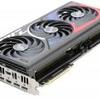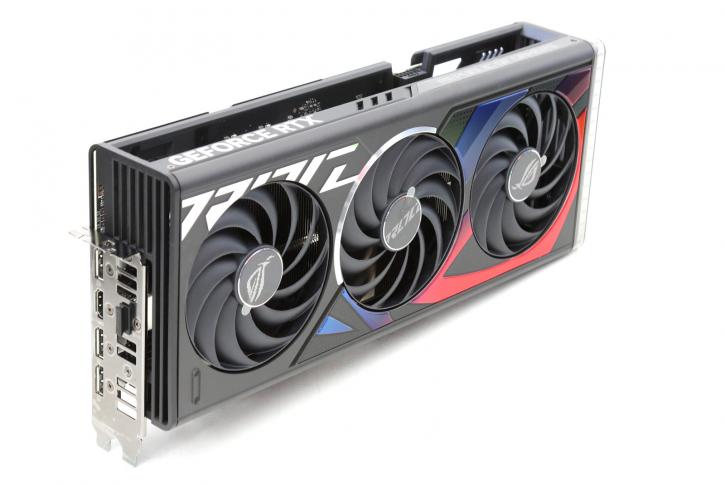Introduction
ASUS ROG STRIX GeForce RTX 4070 Ti OC Gaming 12G
We test the gorgeous ASUS ROG STRIX GeForce RTX 4070 Ti OC Gaming 12G, and that's quite a mouth full for a product. It has a fantastic appearance and does a good job of cooling down while maintaining its silence. It's also a great product for the tweaker among us. Join us as we review the GeForce RTX 4070 Ti 12GB. Yeah no surprises here, that would be the product that was 4080 12GB that NVIDIA got cancelled en renamed into the 4070 series. The new graphics card provides greater performance at all fronts, more extensive raytracing features, and DLSS 3.0 thanks to upgraded Tensor cores.
While we all had a reasonably dull year in terms of technology, 2022 is loaded with new releases. Among them were NVIDIA's ADA GPU architecture graphics cards for the consumer market. The company has unveiled its new GPU design for next-generation gaming PCs. In the short term, two or three variants of GPUs are expected in the first launch wave, each one will outperform the Ampere 3000 series somehow. NVIDIA's RTX 4000 GPUs will provide impressive performance, but next-gen graphics cards may have to contend with alternatives like AMD's rDNA3 and Intel's Arc Alchemist. Where GeForce RTX 4090 is Nvidia's flagship model in the new series, the GeForce RTX 4080 16GB took a step down. We're now in the first days of 2023 and NVIDIA released its 4070 Ti. The AD104 GPU powers the GeForce RTX 4070 Ti's 7,680 shader cores, which can generate an impressive 40 FP32 Shader-TFLOPS for rendering rasterized graphics, 240 Fourth Generation Tensor Cores, which can generate 641 Tensor-TFLOPS (with Sparsity) for AI processing and DLSS, 60 Third Generation Ada RT Cores, which can generate 93 RT-TFLOPS for driving next-generation ray-tracing The GeForce RTX 4070 Ti, like the rest of the GPUs in Nvidia's RTX 40 Series, features Ada technologies like Shader Execution Reordering (SER), the new RT core engines, and DLSS 3. The RTX 4070 Ti is the best graphics card for high-end gaming and content creation. Enjoy advanced RTX accelerations in the most popular creative software, premium NVIDIA Studio drivers designed for optimum stability, and a set of unique tools that tap into RTX's potential to facilitate AI-assisted creative workflows. First things first, NVIDIA is not launching a reference design (founder edition) ergo, only the board partners will release this card. The GeForce 4070 Ti thus. Initially, NVIDIA wanted to release two distinct GeForce RTX 4080 versions. A GeForce RTX 4080 12GB with GDDR6X RAM. Nvidia, however first announced a 16GB model of the RTX 4080. Due to market reception and confusion, NVIDIA removed that 12GB version from its deck of cards (which is now the 4070 (Ti)). The reference boost frequency is 2.610 GHz. This card has a 192-bit memory bus, 12Gb at 21 Gbps and a relatively okay tgp (total graphics power) of 285W.
The RTX 40 STRIX series is ASUS's most powerful factory-overclocked air-cooled graphics card to date, and its ultra-premium design makes it look as much like art as it does like a piece of cutting-edge technology. For this review, we will use the RTX 4070 Ti ROG Strix "O12G Gaming" model, which comes pre-tuned and optimised right out of the box. It is a unique piece of artwork that features the most impressive cooling solution that we have ever seen in a product of this kind. A sophisticated, up-to-date appearance is achieved by combining ingenious metal components with two tones harmoniously with controllable RGB LED diffusers. Axial-Tech 0dB fans and a robust multi-fin-stack heatsink with a vapour-chamber plate are just two of the generational enhancements that have been incorporated into the most recent iteration of the ROG STRIX. Additionally, it comes with a number of features that are really necessary for gamers and enthusiasts, such as an ARGB header, extra case-fan headers, and dual BIOS. The clock speed of the GPU Boost has been increased to 2760 MHz by the manufacturer, which is a pleasant surprise. This card is expected to cost $999, a hefty markup compared to the starting price of $799 that NVIDIA advertises as MSRP. It has 7680 shader cores and 12 GB of brand-new GDDR6X graphics memory. When we tweak it, it reaches close to 3.1 GHz. The memory actually operates at a rate of 24 Gbps. With these specifications and other high-end components in mind, let us get this review started, shall we?


